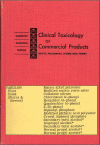PCB-containing wood floor finish is a likely source of elevated PCBs in residents' blood, household air and dust: a case study of exposure
- PMID: 18201376
- PMCID: PMC2267460
- DOI: 10.1186/1476-069X-7-2
PCB-containing wood floor finish is a likely source of elevated PCBs in residents' blood, household air and dust: a case study of exposure
Abstract
Background: Polychlorinated biphenyls (PCBs) are persistent pollutants identified worldwide as human blood and breast milk contaminants. Because they bioaccumulate, consumption of meat, fish, and dairy products predicts human blood concentrations. PCBs were also used widely in building materials, including caulks and paints, but few studies have evaluated the contribution of these exposures to body burden.
Methods: In an earlier study, we detected PCBs in indoor air in 31% of 120 homes on Cape Cod, MA. Two of the homes had much higher concentrations than the rest, so we retested to verify the initial finding, evaluate blood PCB concentrations of residents, and identify the PCB source.
Results: Air and dust concentrations remained elevated over 5 years between initial and follow-up sampling. Blood serum concentrations of PCBs in residents of the homes were generally elevated above the 95th percentile of a representative sample of the US population. Serum concentrations in residents and air and dust concentrations were especially high in a home where a resident reported use of PCB-containing floor finish in the past, and where the floor of one room was sanded and refinished just prior to sample collection.
Conclusion: This case-study suggests that PCB residues in homes may be more significant contributors to overall exposure than diet for some people, and that use of a commercially-available PCB-containing wood floor finish in residences during the 1950s and 1960s is an overlooked but potentially important source of current PCB exposure in the general population.
Figures
References
-
- Longnecker MP, Wolff MS, Gladen BC, Brock JW, Grandjean P, Jacobson JL, Korrick SA, Rogan WJ, Weisglas-Kuperus N, Hertz-Picciotto I, Ayotte P, Stewart P, Winneke G, Charles MJ, Jacobson SW, Dewailly E, Boersma ER, Altshul LM, Heinzow B, Pagano JJ, Jensen AA. Comparison of polychlorinated biphenyl levels across studies of human neurodevelopment. Environ Health Perspect. 2003;111:65–70. - PMC - PubMed
Publication types
MeSH terms
Substances
Grants and funding
LinkOut - more resources
Full Text Sources
Medical
Miscellaneous


